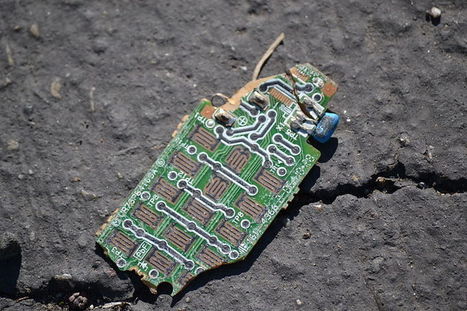INTERNET OF THINGS:
Bricker Bot soll 2 Millionen IoT-Geräte zerstört haben
Wie weit darf der Kampf gegen unsichere IoT-Geräte gehen? Diese Frage wird spätestens seit Aufkommen der Bricker-Bot-Software diskutiert. Der mutmaßliche Entwickler sagt: Ich habe 2 Millionen unsichere Geräte aus dem Netz entfernt.
Der Kampf gegen unsichere IoT-Geräte im Netz geht weiter: Sicherheitsforscher haben in den vergangenen Tagen erneut Aktivitäten des sogenannten Bricker Bots beobachtet - eine umstrittene Software, die unsicher konfigurierte Internet-of-Things-Geräte im Netz aufspürt und unschädlich machen soll, damit diese nicht in Botnetzen wie Mirai eingesetzt werden können.
Learn more / En savoir plus / Mehr erfahren:
http://www.scoop.it/t/securite-pc-et-internet/?&tag=Amnesia&tag=BrickerBot
http://www.scoop.it/t/securite-pc-et-internet/?tag=Mirai+Botnet
http://www.scoop.it/t/securite-pc-et-internet/?tag=wearables
http://www.scoop.it/t/securite-pc-et-internet/?tag=SHODAN+Search+Engine
http://www.scoop.it/t/21st-century-learning-and-teaching/?tag=Internet+of+Things
http://www.scoop.it/t/securite-pc-et-internet/?tag=smart-TV
http://www.scoop.it/t/securite-pc-et-internet/?tag=Internet+of+things
http://www.scoop.it/t/securite-pc-et-internet/?tag=Cars



 Your new post is loading...
Your new post is loading...












INTERNET OF THINGS:
Bricker Bot soll 2 Millionen IoT-Geräte zerstört haben
Wie weit darf der Kampf gegen unsichere IoT-Geräte gehen? Diese Frage wird spätestens seit Aufkommen der Bricker-Bot-Software diskutiert. Der mutmaßliche Entwickler sagt: Ich habe 2 Millionen unsichere Geräte aus dem Netz entfernt.
Der Kampf gegen unsichere IoT-Geräte im Netz geht weiter: Sicherheitsforscher haben in den vergangenen Tagen erneut Aktivitäten des sogenannten Bricker Bots beobachtet - eine umstrittene Software, die unsicher konfigurierte Internet-of-Things-Geräte im Netz aufspürt und unschädlich machen soll, damit diese nicht in Botnetzen wie Mirai eingesetzt werden können.
Learn more / En savoir plus / Mehr erfahren:
http://www.scoop.it/t/securite-pc-et-internet/?&tag=Amnesia&tag=BrickerBot
http://www.scoop.it/t/securite-pc-et-internet/?tag=Mirai+Botnet
http://www.scoop.it/t/securite-pc-et-internet/?tag=wearables
https://globaleducationandsocialmedia.wordpress.com/2014/01/21/why-is-it-a-must-to-have-basics-knowledge-of-cyber-security-in-a-connected-technology-world/
http://www.scoop.it/t/securite-pc-et-internet/?tag=SHODAN+Search+Engine
http://www.scoop.it/t/21st-century-learning-and-teaching/?tag=Internet+of+Things
http://www.scoop.it/t/securite-pc-et-internet/?tag=smart-TV
http://www.scoop.it/t/securite-pc-et-internet/?tag=Internet+of+things
http://www.scoop.it/t/securite-pc-et-internet/?tag=Cars